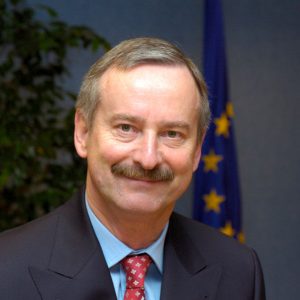Vice-President Siim Kallas discusses priorities for the future of rail with the CEOs of rail Infrastructure Managers
Posted: 22 March 2011 | | No comments yet
European Commission Vice-President Siim Kallas today participated in a meeting of the CEOs of EIM…
European Commission Vice-President Siim Kallas today participated in a meeting of the CEOs of EIM...
European Commission Vice-President Siim Kallas today participated in a meeting of the CEOs of European Rail Infrastructure Managers (EIM). The discussions provided a preview on the European Commission’s Transport White Paper due to be published next week, and covered the issues that EIM sees as the most important priorities for the European rail network in the years to come: financing of rail infrastructure, rail freight corridors, asset management, interoperability and safety.


Siim Kallas, European Commission Vice-President
Vice-President Kallas met with the heads of all EIM members, representing Infrastructure Managers from 11 European countries.
Introducing the topic of Asset Management[1], EIM President and CEO of RFF Hubert du Mesnil, said: “Our industry is typically capital-intensive, so it is vital that we should make our assets work for us in the best possible way, not only for our own performance but also, and above all, for that of the rail sector as a whole. Unlike competitive economies driven by market forces, monopoly economies are competing against themselves. Our performance enhancement and innovation are therefore stimulated by cooperation rather than market forces.”
EIM pointed to the financing of rail infrastructure as one of the most pressing issues. Imbalances between the costs induced in managing national rail networks and the funding received by Infrastructure Managers generate debt. Romeu Reis, Member of the Board of REFER and Vice-President of EIM, explained that “The growing historical debts and increased deficits in some Infrastructure Managers, together with the current public financial constraints, risk to threaten performance levels and network development. New framework conditions and instruments are urgently needed to ensure a sound and sustainable financing of the European rail network.”
Reiterating EIM’s vision that rail freight corridors should be the backbone of the EU transport system, Gunnar Malm, Director General of Trafikverket and Vice-President of EIM, said: “We support the Commission’s view that such corridors should bring about a simplification of procedures, an optimisation of schedules, and cargo tracking and tracing, thereby reducing considerably the administrative burden imposed on multimodal freight transport. European Rail Infrastructure Managers are committed to cooperate with the Commission to promote an efficient and customer-oriented approach to rail corridors.”
EIM is committed to achieve the goal of an integrated, modern and safe railways network, first and foremost by supporting the role of the European Railway Agency to reinforce safety and interoperability. Luc Lallemand, CEO of Infrabel and Vice-President of EIM, said: “The opening of the European rail market requires harmonised technical specifications as well as a consistent application of safety regulations. In this respect, it is key that the decision regarding ETCS Baseline 3 is taken in a timely way – and in 2012 at the latest, as agreed. Also, EIM members expect the European Commission to do more to ensure both upward and downward compatibility of ETCS.”
Reference
- Asset Management encompasses systematic and coordinated activities through which a rail infrastructure manager optimally manages its assets, e.g. tracks or signalling, and their performance, risks and expenditures over their life cycle.
Related organisations
European Commission (EC), European Rail Infrastructure Managers (EIM)


